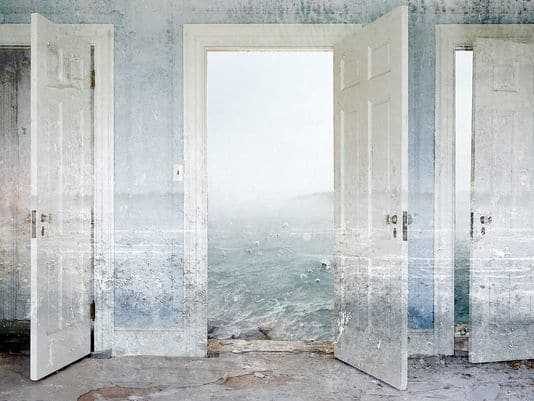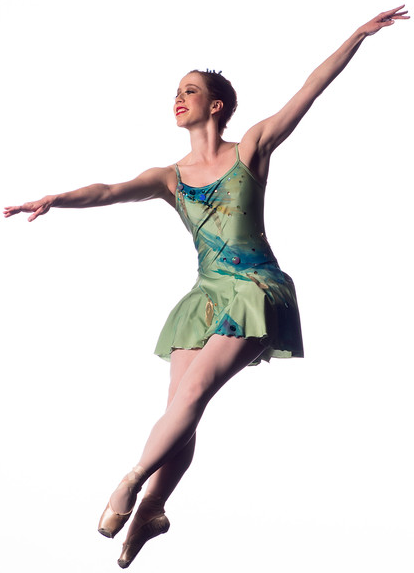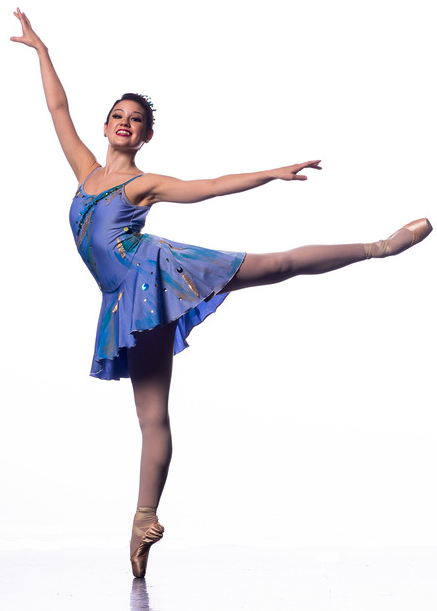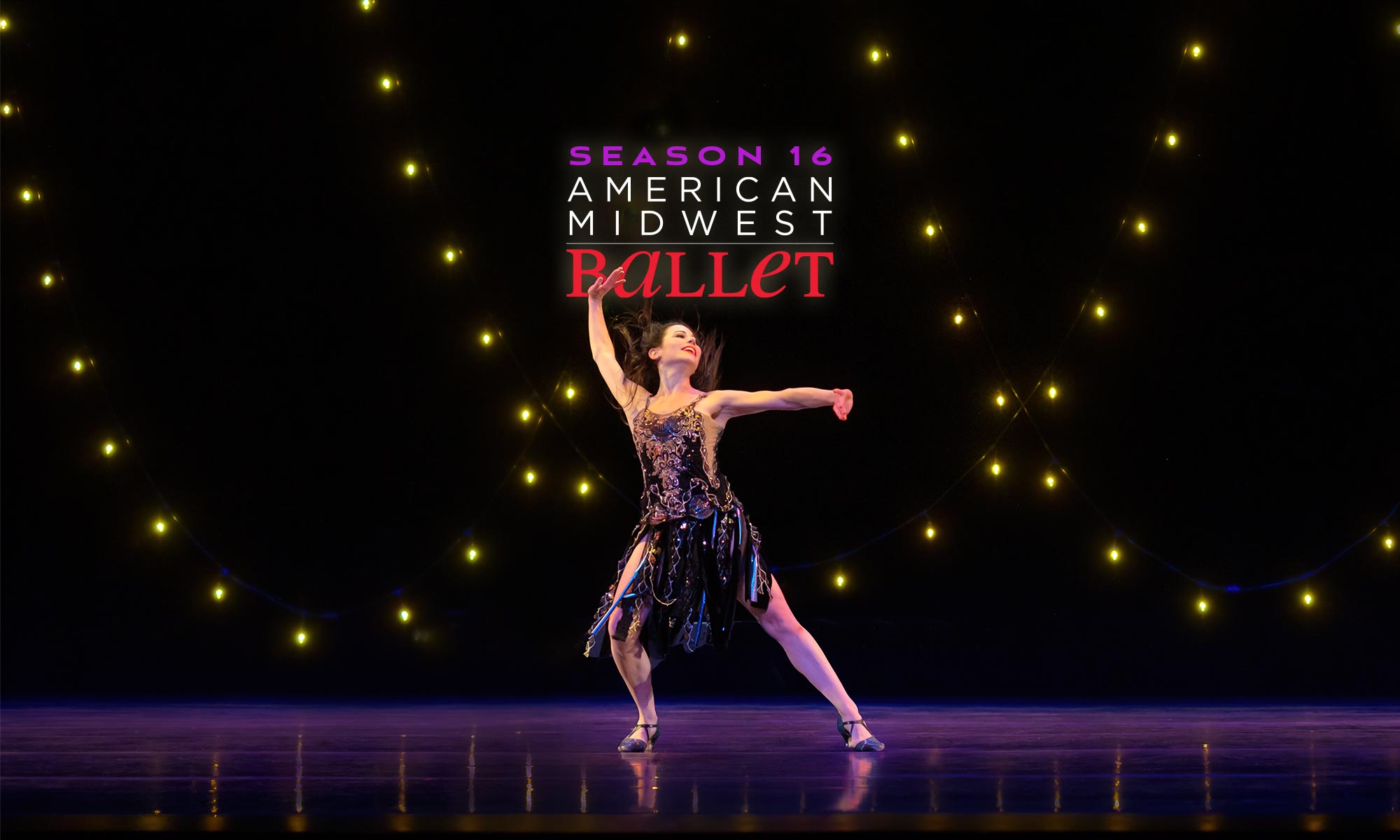OMAHA, NE — February 13, 2017 — American Midwest Ballet dancers, Kelsey Schwenker and Erin Alarcón met on their very first day in Nebraska.
“Seven years ago, we both moved to Omaha to be apprentices at American Midwest Ballet,” says Alarcón. “We were roommates for four years and have been friends ever since.”

Schwenker and Alarcón are among a handful of American Midwest Ballet dancers creating original dance works inspired by pieces selected from the art collection at Vero Beach Museum of Art. Their work is featured in the ballet’s Interpretive Dance Series tour to Ballet Vero Beach in Florida on February 17.
A long history of friendship contributes to the harmonious energy necessary to create one cohesive work from two creative minds.
“There is a lot of laughter in our process,” according to Schwenker. “We have a strange and wonderful bond that made working on this piece very easy and enjoyable.”

Tell us a little bit about the artwork you are interpreting:
Schwenker: Our work is inspired by the artist, Jeffrey Becton. He combines and layers works of photography together to make beautiful, serene works of art.
Alarcón: Becton’s process for creating his work became the jumping off point for us. He takes photographs of seemingly separate places and objects, then fuses and layers them together to create one seamless image.
How was the art chosen? Did you share in this decision?
Alarcón: With this particular project, Adam Schnell [Ballet Vero Beach artistic director] gave us the option to choose from six different artists. Immediately inspired by Becton’s creative process, I sent a text to Kelsey asking if she wanted to collaborate on this work.
Schwenker: Erin and I looked at the available works in the collection and were pleased to discover that we liked the same one the best. The three works we selected combined images of the ocean with old rooms and made something really special as a result. I love the idea that something old and maybe a bit run down (a room in a house in this instance) can still hold a lot of beauty.
Alarcón: Our idea was that we both would choreograph a solo, and once completed, we would see the other’s solos and entwine them together to create duets.
Schwenker: Erin and I began work on our piece during the summer before we knew who our dancers would be. We did our solos separately and then came together to begin the first duet.
So, who are the American Midwest Ballet dancers performing in your piece?
Alarcón: Rebecca Brenner (Becca) and Amaris Sharratt are dancing our piece. When we initially started, we didn’t know yet who was going on this Vero Beach tour. Once we found out, we realized Becca fit perfectly into the solo I’d choreographed, and Amaris into the one Kelsey created.
Schwenker: We were excited because elements of their personalities and movement qualities fit our vision for our characters quite well.
The words “interpretive dance” may evoke the impression of a more relaxed, less structured style. Is this the case with your piece, or it is a fully structured work?
Alarcón: Our choreography is definitely a fully structured work. That is one of the great aspects of the Interpretive Dance Series; because there are different choreographers interpreting different artists, you will get a menagerie of choreographic styles.
Kelsey: Our work runs almost 17 minutes, which is a lot for our dancers to remember. But even with its length, we made the frame very easy to understand. There is an opening duet, a shorter, slower duet with a dfferent dynamic, two solos, and a concluding duet.

What style best defines this choreography for you?
Schwenker: I would say this could be contemporary ballet, but also neoclassical in parts.
Alarcón: The nice thing about the process we used to create the piece is that we ended up with one solo choreographed in the neoclassical style and one choreographed with modern dance — so our entire work ended up being a union of the two.
Which works have you choreographed before?
Alarcón: I’ve choreographed a number of different works starting in college at Mercyhurst University (Erie, PA) but most recently presented my work One in Three in American Midwest Ballet’s Season 6 production of Momentum last spring.
Schwenker: I have done a lot of choreography for students and for Repertory Ensemble. This is my first foray with my peers in a fully collaborative effort for the company.
How has this experience as a choreographer been for you?
Schwenker: I really like to control things, so setting choreography on others and letting them have it and make it their own can be hard for me. Erin and I both choreographed our solos first, so you can see our personalities in each. It was interesting lending them to other women to try on and move around in.
Do you think most dancers have an inner choreographer just waiting to get out? For you, is choreography an opportunity to add dimension and artistry to your own dance skills, or more of a stand-alone art of its own?
Alarcón: I think it’s hard to live in the dance world without choreographing at some point. But, like anything, there are some people who have a passion for it and others who don’t. For me, the greatest thing about choreographing is giving a dance to someone else and allowing them to explore their own artistry.
Schwenker: I don’t think all dancers want to choreograph. Some may never, in fact. For me, I was excited to create something new with one of my best friends in the company and have that interaction and experience.
What are the unique challenges for a choreographer when given a parameter from which you can’t deviate (i.e. your work must incorporate this art, or this music, or these dancers, etc.) How do you make it your own?
Schwenker: There are always ways to bring parts of yourself into a project even when there are parameters. The visual art or the music is the inspiration but it wouldn’t be a true work of art without the human elements of emotion and drive adding to the experience.
Alarcón: Becton’s images have a soft dreamlike quality as they combine oceanic views with coastal homes. The solo I created for Becca ended up being very playful and fast. Some may view this as departure from the artwork; however, I chose this route because I found Becton’s creative process playful, and the ocean brings back memories of my childhood at the Jersey Shore, which was busy and full of life.
Is this your first collaboration?
Alarcón: It is our first choreographic collaboration together — but we have worked on a number of projects together during our seven years at American Midwest Ballet, including dancing opposite each other numerous times. Knowing our history, I had no doubt that it would be a fun process to collaborate. While we were choreographing the duet sections, it was easy to understand what the other person was thinking when it came to timing, quality and movement patterns. For this project, two minds were better than one.
Schwenker: This is definitely our first collaboration of this scale. It seemed a bit daunting at the beginning but after it was completed, we were excited to see our accomplishment.
As always, which came first: the music or the dance?
Schwenker: We both came to the drawing board with solo music that we loved. Then Erin discovered a three-part composition that became the duet portions. They all sound unique, yet come together in an interesting way.
Alarcón: Music. Always the music.
Dancers Amaris Sharratt and Rebecca Brenner tour to Florida this week to perform with Camilo A. Rodriguez in the Interpretive Dance Series tour on February 17 at Ballet Vero Beach. In addition to performing in Schwenker and Alarcon’s work, the two will also perform in their own original pieces, as well as in works created by American Midwest Ballet dancers Sasha York and Jake Godek.

Your Region's Professional Dance Company